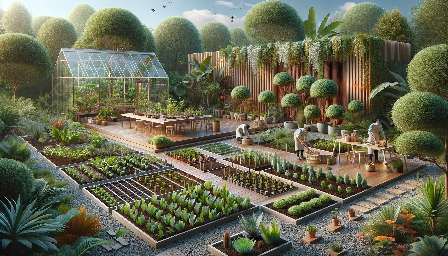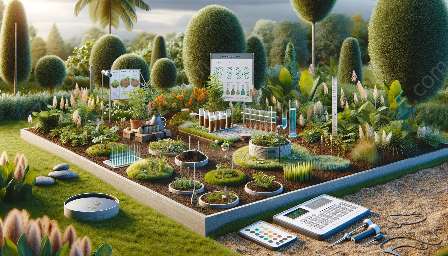With the rapid advancements in agricultural technology, the fields of horticulture, agriculture, and forestry are experiencing transformative changes. Innovative developments in precision agriculture, biotechnology, and sustainable practices are revolutionizing the way we cultivate crops, manage landscapes, and utilize natural resources.
In this comprehensive guide, we will explore the synergy between agricultural technology and its impact on horticulture, agriculture, and forestry. From precision farming techniques to smart horticultural systems and sustainable forestry practices, we will delve into the latest trends, challenges, and opportunities in these interconnected fields.
The Evolution of Agricultural Technology
Agricultural technology, also known as agri-tech, encompasses a wide range of tools, equipment, and methodologies designed to improve agricultural processes and productivity. The evolution of agricultural technology has been driven by the need to enhance efficiency, optimize resource utilization, and address environmental concerns.
One of the key areas of development is precision agriculture, which leverages data-driven insights and advanced sensors to precisely manage inputs such as water, fertilizers, and pesticides. This approach has revolutionized agricultural practices by enabling farmers to make informed decisions based on real-time data, leading to more sustainable and productive outcomes.
Biotechnology is another pivotal aspect of agricultural technology, offering innovative solutions for crop improvement, pest control, and disease resistance. Through genetic engineering and biopharming, researchers are developing crops with enhanced nutritional value, increased resilience to environmental stresses, and reduced reliance on chemical inputs, thus contributing to the goal of sustainable agriculture.
Horticulture in the Age of Technology
Within the realm of horticulture, agricultural technology plays a crucial role in enhancing crop cultivation, landscaping, and ornamental plant production. Advancements in greenhouse automation, controlled environment agriculture, and vertical farming have revolutionized the horticultural industry by improving crop quality, reducing resource use, and extending the growing season.
Smart horticultural systems, equipped with sensors, monitoring devices, and automated controls, enable growers to create optimized microclimates, deliver precise irrigation, and regulate environmental conditions to support plant growth. These technological innovations have not only increased the efficiency of horticultural operations but have also contributed to the sustainability of urban agriculture and the integration of green spaces in urban environments.
Furthermore, the integration of biotechnology in horticulture has led to the development of disease-resistant ornamental plants, genetically modified flowers with extended vase life, and novel varieties with enhanced fragrance and aesthetics. These breakthroughs have expanded the scope of horticulture, offering new possibilities for ornamental plant breeding and commercial floriculture.
Agricultural Technology and Sustainable Forestry
As the forestry sector embraces sustainable management practices, agricultural technology has emerged as a valuable tool for optimizing timber production, enhancing forest health, and conserving biodiversity. Remote sensing technologies, geographic information systems (GIS), and LiDAR (Light Detection and Ranging) have revolutionized forest monitoring, enabling precise assessment of forest resources, wildfire detection, and environmental impact assessment.
Moreover, advancements in forestry equipment and machinery, such as GPS-guided logging systems and digital forest inventory tools, have improved operational efficiency, reduced environmental disturbances, and minimized the carbon footprint of forestry activities. These developments align with the principles of sustainable forest management, fostering the conservation of natural ecosystems while meeting the demand for timber and fiber products.
Biotechnological interventions in forestry have also shown promise, with research focusing on genetic modification for disease resistance, tree breeding for improved wood quality, and bioengineering for the production of specialty forest products. The integration of agricultural technology in forestry is driving innovation in wood products, bioenergy, and forest restoration, thereby contributing to the sustainable utilization of forest resources.
The Future of Agricultural Technology
Looking ahead, the future of agricultural technology holds immense potential for addressing global challenges related to food security, climate change, and environmental sustainability. With the integration of digital agriculture, artificial intelligence, and robotics, the agricultural landscape is poised to undergo further transformations, leading to increased automation, predictive analytics, and personalized crop management.
In horticulture, the convergence of agri-tech with urban agriculture, green infrastructure, and biophilic design is expected to redefine the concept of sustainable urban living, fostering the creation of greener, healthier, and more resilient cities. Furthermore, the cross-pollination of agricultural and forestry technologies is likely to drive innovation in agroforestry systems, agroecology, and multifunctional landscapes, enabling the harmonious coexistence of productive agriculture and thriving ecosystems.
As agri-tech continues to advance, collaborations between researchers, industry stakeholders, and policymakers will be essential for steering the development and implementation of innovative solutions that promote the well-being of people, the planet, and the prosperity of agricultural and forestry sectors.



